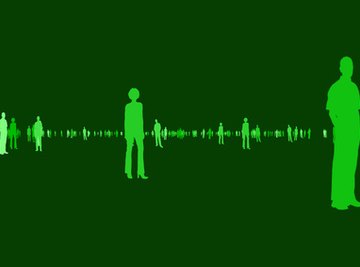
Qualitative research is a type of scientific investigation that aims to provide answers to a question without bias. It uses predetermined procedures such as interviewing participants to collect information and produce findings. Biases occur naturally in the design of your research, but you can minimize their impact by recognizing and dealing with them. An impartial qualitative research project respects the dignity of the research participants, observes fundamental principles of ethics and takes all of the variables into account.
Seek training and certification in research ethics before beginning the preliminary work and data collection of qualitative research.
Be wary of bias in the findings of research on the Internet. Some research companies hide some research and promote others with more positive results.
Avoid design problems by understanding the limitations of the sample group. For example, if you are researching the health benefits of a certain food, be aware if only females or people over a particular age are involved. Bias can occur when certain groups are left out. Account for any unavoidable omission bias by changing the experimental design.
Ensure that the research participants are independent and treated with respect so that they are protected from exploitation. This ensures that people are not selected based on a desire to prove a specific research objective. Avoid becoming focused on one viewpoint when observing participants as this endangers the impartiality of the research.
Allow the research participants enough time to complete questionnaires. Procedural bias can occur if you put too much pressure on them. For example, employees who are asked to complete a survey during a coffee break are more likely to skim through the questions without reading them properly.
Be aware of errors in data collection and measuring processes. For example, when collecting information on prejudice against people of other races, know that most people are reluctant to give answers in an interview because they fear being judged and appearing racist. Researchers often deal with measurement bias by using numerous interviews and an anonymous questionnaires. They recognize that people will tell the interviewer what they think he wants to hear instead of the truth.
Review all the variables arising from the experiment to ensure that there are no experimental errors. False positives and negatives will create biased results.
Ensure that the results of the research are accurately recorded in literature to avoid reporting bias. Show that you understand that certain biases exist and that you have made every effort to consider this in the analysis and statistics.
Tips
Warnings
About the Author
Carola Finch began freelancing for newspapers and magazines in 1976. She specializes in writing about people with disabilities, business, Christianity and social issues. Finch studied journalism and communications at Red River Community College.
Photo Credits
people image by cloud1971 from Fotolia.com
